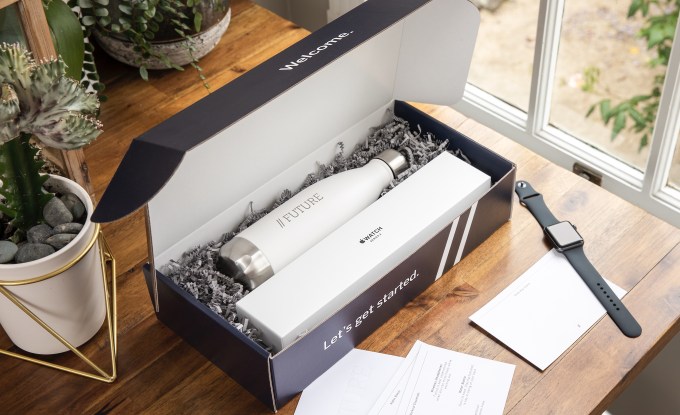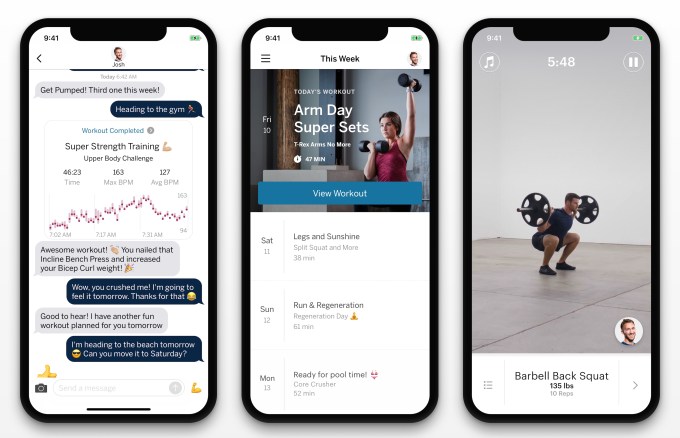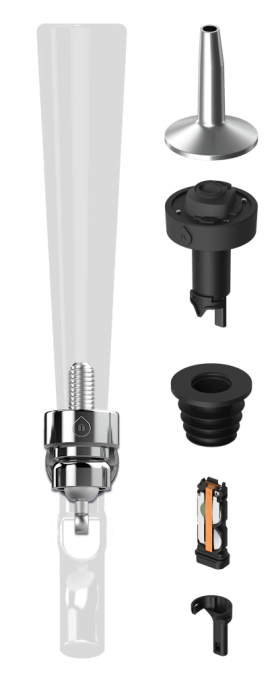Serverless and containers: Two great technologies that work better together
Cloud native models using containerized software in a continuous delivery approach could benefit from serverless computing where the cloud vendor generates the exact amount of resources required to run a workload on the fly. While the major cloud vendors have recognized this and are already creating products to abstract away the infrastructure, it may not work for every situation in spite of the benefits.
Cloud native, put simply, involves using containerized applications and Kubernetes to deliver software in small packages called microservices. This enables developers to build and deliver software faster and more efficiently in a continuous delivery model. In the cloud native world, you should be able to develop code once and run it anywhere, on prem or any public cloud, or at least that is the ideal.
Serverless is actually a bit of a misnomer. There are servers underlying the model, but instead of dedicated virtual machines, the cloud vendor delivers exactly the right number of resources to run a particular workload for the right amount of time and no more.
Nothing is perfect
Such an arrangement would seem to be perfectly suited to a continuous delivery model, and while vendors have recognized the beauty of such an approach, as one engineer pointed out, there is never a free lunch in processes that are this complex, and it won’t be a perfect solution for every situation.
Arpana Sinha, director of product management at Google, says the Kubernetes community has really embraced the serverless idea, but she says that it is limited in its current implementation, delivered in the form of functions with products like AWS Lambda, Google Cloud Functions and Azure Functions.
“Actually, I think the functions concept is a limited concept. It is unfortunate that that is the only thing that people associate with serverless,” she said.
She says that Google has tried to be more expansive in its definition. “It’s basically a concept for developers where you are able to seamlessly go from writing code to deployment and the infrastructure takes care of all of the rest, making sure your code is deployed in the appropriate way across the appropriate, most resilient parts of the infrastructure, scaling it as your app needs additional resources, scaling it down as your traffic goes down, and charging you only for what you’re consuming,” she explained.
But Matt Whittington, senior engineer on the Kubernetes Team at Atlassian says, while it sounds good in theory, in practice, fully automated infrastructure could be unrealistic in some instances. “Serverless could be promising for certain workloads because it really allows developers to focus on the code, but it’s not a perfect solution. There is still some underlying tuning.”
He says you may not be able to leave it completely up to the vendor unless there is a way to specify the requirements for each container, such as instructing them you need a minimum container load time, a certain container kill time or perhaps you need to deliver it a specific location. He says in reality it won’t be fully automated, at least while developers fiddle with the settings to make sure they are getting the resources they need without over-provisioning and paying for more than they need.
Vendors bringing solutions
The vendors are putting in their two cents trying to create tools that bring this ideal together. For instance, Google announced a service called Google Cloud Run at Google Cloud Next last month. It’s based on the open-source Knative project, and in essence combines the goodness of serverless for developers running containers. Other similar services include AWS Fargate and Azure Container Instances, both of which are attempting to bring together these two technologies in a similar package.
In fact, Gabe Monroy, partner program manager at Microsoft, says Azure Container Instances is designed to solve this problem without being dependent on a functions-driven programming approach. “What Azure Container Instances does is it allows you to run containers directly on the Azure compute fabric, no virtual machines, hypervisor isolated, pay-per-second billing. We call it serverless containers,” he said.
While serverless and containers might seem like a good fit, as Monroy points out, there isn’t a one-size-fits-all approach to cloud-native technologies, whatever the approach may be. Some people will continue to use a function-driven serverless approach like AWS Lambda or Azure Functions and others will shift to containers and look for other ways to bring these technologies together. Whatever happens, as developer needs change, it is clear the open-source community and vendors will respond with tools to help them. Bringing serverless and containers together is just one example of that.
Powered by WPeMatico
Future launches $150/mo exercise app where real coaches nag you
The only way to beat laziness is with guilt, so that’s what Future sells. It assigns you an actual human trainer who builds personalized workout plans and messages you throughout the day to make sure you’re doing them. It even gives you an Apple Watch to track your activity and ensure you’re not lying. Future actually got me to the gym where my coach kicked my ass remotely with a 30-minute lifting routine I’d never have stuck to by myself.
The catch? It’s probably the most expensive app you’ve ever seen, charging $150 per month.
Future officially launches today. Luckily it comes with a one-month money-back guarantee that CEO Rishi Mandal says has only been redeemed once. It’s produced some stunning stats from its beta tests: 95% of users stuck with it for three months, and 85% kept training for six months. That’s unheard of in fitness tech.

Future’s welcome kit includes a water bottle and Apple Watch
The remarkable retention and Future’s potential to become a gateway for your exercise and nutrition spending have roped in some big-name investors. Today it’s announcing an $8.5 million Series A led by Kleiner Perkins with partner Mamoon Hamid joining the board, building on its $3 million seed. Other backers include Instagram co-founder Mike Krieger, Khosla Ventures, Founders Fund and Caffeinated Capital. Athletes are betting on Future’s promise of democratizing the personal training they get, including Golden State Warrior Sean Livingston, and NFL stars Ndamukong Suh and Kelvin Beachum.
“Future manages to be both deeply personalized (and personable!) while being super convenient,” says Krieger of one of his first investments since leaving Instagram. Future’s Mandal built his old startup Sosh while sitting next to Krieger at incubator Dogpatch Labs, where Instagram was getting its start. “The always-available nature of it means travel or a shifting schedule is no longer an excuse to not work out.”
How Future works (out)
Throughout the onboarding, Future flexes the money you spend to offer what feels like a luxury app experience.
Upon signup, you’ll answer some questions about your goals like slimming down or beefing up, and pick from a few expert trainers matched to your needs. You’ll do a 15-minute video chat with your trainer to get friendly, describe your schedule and hammer out details of your workout plan. After you get your welcome kit with some swag and an Apple Watch, your trainer delivers your week’s worth of personalized daily routines that come with video instructions for each exercise. The Future app provides audio cues (and optional music) to guide you through the workouts while your trainer chimes in with personalized pointers and motivation via pre-recorded voice clips.

Future’s app guides you through workouts with instructional video clips and audio cues
But what’s unique about Future is that your trainer proactively checks in with you throughout your day to make sure you’re actually going to the gym or doing those pushups. Because you don’t switch between trainers with each workout like some apps, and because they have your activity and heart-rate data from the Apple Watch, they can spot patterns of procrastination or flaking out. You’re prompted to give feedback after each sweat session that the trainer uses to tweak your plan. That personalization and prodding go a long way to making sure Future always fits your day and actually stays part of it.
For example, I wanted to burn a few pounds without burning too much time by adding a gym day or two plus some warmup strength training before my home Peloton rides. My trainer Renee Zernicke, a former University of Wisconsin director of Sports Performance for basketball, designed a 30-minute weight-lifting circuit and some 10-minute bodyweight exercise plans for me. When I messaged her that I was doing a more intense spin class today, she remixed my warmup exercises to avoid legs so I wouldn’t be tired during my ride. So far she’s always responded within a few minutes, and been cheerful yet forceful. “I know your days are slammed, just wanted to check in and see if you were able to get to that spin class?” she messaged me at 6:30pm. That’s something even most in-person trainers don’t do.

Future matches you with several trainer options
I found most of the workout instructions easy to understand, and the audio cues make it easy to do routines without constantly staring at your phone. But the one thing you really lose with a text message trainer instead of an in-person coach is warnings when you’re doing something wrong. Bad posture or jerky motions could get you injured. It’s all a lot smoother if you know your way around a gym. Future could do more to gauge your familiarity with proper form for riskier exercises, and then either teach you or steer you away from them. I hope I’m so sore today because I’m getting built, not getting hurt.
Your pocket motivational speaker

My trainer Renee encouraging me to get to the gym
Future was inspired by some scary facts. “Seventy percent of Americans are obese and overweight,” Mandal tells me. “We spend $3.5 trillion per year on healthcare, yet we have pretty mediocre outcomes.” Mandal had gone through Stanford, worked at NASA and been at Slide when it was acquired by Google. After selling his local experience app Sosh to Postmates, he became an entrepreneur-in-residence at Khosla Ventures, which does many medtech investments. There, Mandal realized health is largely determined by how you eat, sleep, deal with stress, take your medicine and exercise.
Thanks to smart watches, that last one had become the easiest to measure while remaining the toughest to do right on your own. Mandal set out to learn what the fittest people, professional athletes, do for exercise. They all said they relied on personal trainers to make all the workout plans and force them to do them. Home gyms or apps full of pre-made exercises weren’t enough. They needed someone to keep them accountable.
The trouble is that’s pretty expensive one-on-one. So Mandal teamed up with Justin Santamaria, a 10-year Apple veteran from the first iOS team who’d been working on iMessage and FaceTime. Together they designed Future in 2017 to make personal trainers cheap enough to be more accessible while retaining the personal connection that keeps trainees on track.
If you won’t shell out $150 per month to be nagged, there are plenty of apps like Sweat that let you choose between guided workouts. Hell, if you’ve got that much will power you could get any gym membership or just go running. But the closest thing to Future, called Fit.net, folded. AI trainers like Freeletics can’t make you feel guilty or inspired the same way. Lose It and MyFitnessPal can get fellow trainees to badger you, but Mandal found people don’t obey peers like a respected trainer.

The constant communication and sense of trust users develop with their coaches could give Future potential beyond subscription fitness. The app becomes a hub for your healthy behavior. Future already offers an in-app Shop where it recommends workout clothes, headphones and water bottles. It’s easy to imagine it partnering with fitness equipment makers, health food lines or other brands to score a cut of referred sales. “We become your most important relationship regarding your health. You only talk to your doctor two times to three times per year,” says Mandal. But you might tell your trainer you’re looking for ways to eat healthier or sleep better. “Over time, that’s the opportunity.”
Still, the biggest hurdle is convincing people to pay more than 10X their Netflix fee for a personal trainer they don’t see in person. Compared to the $1 apps we’re used to, Future can induce sticker shock. But compared to unused gym memberships, pricey private coaching and potential health problems, Future could look affordable if well-to-do professionals squint right. Humans are sluggish. Most healthy habits lapse. But Future is building the closest thing to “press button, pay money, get fitter” — which in the end looks like getting someone to enthusiastically shame/support us from afar.
Powered by WPeMatico
A cryptocurrency stealing app found on Google Play was downloaded over a thousand times
Researchers have found two apps masquerading as cryptocurrency apps on Android’s app store, Google Play.
One of them was largely a dud. The second was designed to steal cryptocurrency, the researchers said.
Security firm ESET said one of the two fake Android apps impersonated Trezor, a hardware cryptocurrency wallet. The good news is that the app couldn’t be used to steal cryptocurrency stored by Trezor. But the researchers found the app was connected to a second Android app that could have been used to scam funds out of unsuspecting victims.
Lukas Stefanko, a security researcher at ESET — who has a long history of finding dodgy Android apps — said the fake Trezor app “appeared trustworthy at first glance” but was using a fake developer name to impersonate the company.
The fake app was designed to trick users into turning over a victim’s login credentials. Uploaded to Google Play on May 1, the app quickly ranked as the second-most popular search result when searching for “Trezor” behind the legitimate app, said Stefanko. Users on Reddit also found the fake app and reported it as recently as two weeks ago.
According to Stefanko, the server where user credentials were sent was linked to a website linked to another fake wallet, purportedly to store cryptocurrency, and also listed on Google Play since February 25.
“The app claims it lets its users create wallets for various cryptocurrencies,” said Stefanko. “However, its actual purpose is to trick users into transferring cryptocurrency into the attackers’ wallets – a classic case of what we’ve named wallet address scams in our previous research into cryptocurrency-targeting malware.”
Both apps were collectively downloaded more than a thousand times. After ESET contacted Google, the apps were pulled offline the next day.
Read more:
- Half a million Android users tricked into downloading malware from Google Play
- Security researchers find over a dozen iPhone apps linked to Golduck malware
- A powerful spyware app now targets iPhone owners
- Google warns app developers of three malicious SDKs being used for ad fraud
- Apple tells app developers to disclose or remove screen recording code
- Apple restores Google’s internal iOS apps after certificate misuse punishment
Powered by WPeMatico
Panic’s Playdate is a pint-sized gaming machine with a ‘season’ of 12 intriguing titles
Tired of your smartphone games, and don’t want to take the Switch with you on the train today? Panic, renowned creator of useful Mac apps and more recently publisher of interesting games, has created a tiny handheld console that goes anywhere and receives a regular trickle of new games. It’s called Playdate.
One has to admire the gumption of jumping into a space that has been so thoroughly dominated by Nintendo and smartphones over the last decade that hardly anyone has even attempted to break in. But Panic isn’t trying to build an empire — just do something interesting and new.
“Nothing’s surprising anymore and surprises are great!” reads the Playdate’s FAQ. “Panic saw an opportunity for something truly different in the world of video games. Something small-scale that could deliver a dose of fun and delight to video game players who have otherwise seen it all.”
It’s different, all right. Bright yellow with a black and white screen and with no spot for removable media like cartridges, the Playdate is more or less self-contained, except of course for the charger and wireless connection. And it’s over the wireless connection that the games come: 12 of them, exclusives created by well-known developers like Keita Takahashi (Katamari Damacy), Bennett Foddy (Getting Over It) and Zach Gage (Ridiculous Fishing).
They appear one at a time, weekly; the first title is Crankin’s Time Travel Adventure, from Takahashi. Oh, right — did I mention it has a crank?
 Yes, the gadget has the usual d-pad and two buttons, but on the side is a little crank that you’ll be using in all these weird little games. In the first one, for instance, you use it to advance and reverse time. Perhaps you’ll be reeling in fish, charging a flashlight, grinding stones for crafting or any number of other tasks. It’s not necessary for every game, though, so don’t worry if it seems too weird. (The crank was the inspired choice of Teenage Engineering, Panic’s hardware design partner.)
Yes, the gadget has the usual d-pad and two buttons, but on the side is a little crank that you’ll be using in all these weird little games. In the first one, for instance, you use it to advance and reverse time. Perhaps you’ll be reeling in fish, charging a flashlight, grinding stones for crafting or any number of other tasks. It’s not necessary for every game, though, so don’t worry if it seems too weird. (The crank was the inspired choice of Teenage Engineering, Panic’s hardware design partner.)
In case you didn’t notice, the games are also black and white. The 2.7-inch, 400×240 screen has no backlight; it isn’t e-paper, but rather just an LCD without color filters. I’ve been saying we should do this for years! It should make for improved battery life and change the way you play a bit — in bed by the light of a lamp instead of on the couch looking at a bright screen.
“We thought Playdate needed to be a different experience than the one you get from your phone, or from a TV-based console,” said Panic’s Director of Special Projects, Greg Maletic, in an email. “This bizarre 1-bit reflective screen was a big part of that: you just won’t see a lot of devices go this route, and for us, that was part of the attraction. And it’s worked out really well: developers have felt energized designing for this weird but cool screen.”
 When the 12 titles have all been delivered, there’s the possibility that more will come, but that depends on lots of things, the company said. But they were careful to make the platform easily hackable.
When the 12 titles have all been delivered, there’s the possibility that more will come, but that depends on lots of things, the company said. But they were careful to make the platform easily hackable.
“Most hardware platforms nowadays have tight restrictions, so it was important to us that Playdate be open enough to allow experimentation,” said Maletic. “That’s the kind of platform that we, as developers, were personally craving. So we’ve made sure that people will be able to develop their own games and easily share them with their friends, without having to worry about plagues of mobile development like code signing and provisioning profiles.”
You’ll be able to preorder a Playdate for $149 later in the year. Yeah, it isn’t cheap — but it’s weird and fun and for now one of a kind. That has to count for something in the increasingly genericized world of gaming hardware.
Powered by WPeMatico
Documentary series Foundation is back with a season 2
Paris startup campus Station F and Le Studio Next have teamed up once again for a second season of Foundation, a documentary series about building a startup. If you liked the first season, you’ll feel right at home.
A video team followed the entrepreneurs working for three startups through their work issues, their personal life and their emotional reactions. You’ll feel like you know them after watching the series.
This year, Foundation focuses on three startups that try to have a social impact. You’ll meet Jean Guo and Binta Jammeh, co-founders of Konexio; Ruben Hallali, founder of HD Rain; and Olivier Jeannel, founder of RogerVoice.
So without further ado, here’s Foundation season 2:
Episode 1
Episode 2
Episode 3
Episode 4
Episode 5
Episode 6
Powered by WPeMatico
Modsy scores $37M to virtually redesign your home
Modsy has raised some new cash as the computer vision startup looks to get physical and build more of the furniture it recommends. The startup announced they have closed $37 million in Series C funding led by TCV. They’ve now raised north of $70 million to date.
The service combines computer vision tech with human designer know-how to let users design the trendy home of their dreams. The process begins with a user snapping pics of their room (or multiple rooms), which Modsy then stitches into a complete 3D model of the room.
Prices range from $69 to $349 depending on what level of finesse you’re looking for.
From there Modsy designers drop in furniture from their partners, like Crate&Barrel, Pottery Barn, West Elm and others, if you pay for their $149 single-room premium package, you can chat with the designers and swap out pieces or try completely different styles. All-in-all the app gives you a lot of options for the price, although the startup’s main method of monetization isn’t these one-time packages, it’s earning cash when you buy the furniture they suggest.
Earlier this year the company branched out into creating their own furniture line of sofas and chairs, which they are injecting into their room designs and recommendations. This could allow the company to transform into more of a smart furniture company as opposed to an AR/computer vision startup.
“I founded Modsy on the premise that in the future we would all be shopping from a personalized catalog-like experience within a virtual version of our real homes,” CEO Shanna Tellerman said in a statement. “This new round of funding will bring us even closer to this reality.”
Powered by WPeMatico
Nectar’s sonar bottle caps could save $50B in stolen booze
Bars lose 20% of their alcohol to overpours and “free” drinks for friends. That amounts to $50 billion per year in booze that mysteriously disappears, making life tough for every pub and restaurant. Nectar wants to solve that mystery with its ultrasound depth-sensing bottle caps that measure how much liquid is left in a bottle by measuring how long it takes a sonar pulse to bounce back. And now it’s bringing real-time pour tracking to beer with its gyroscopic taps. The result is that bar managers can determine who’s pouring too much or giving away drink, which promotions are working and when to reorder bottles without keeping too much stock on hand — and avoid wasting hours weighing or eyeballing the liquor level of their inventory.
Nectar’s solution to alcohol shrinkage has now attracted a $10 million Series A led by DragonCapital.vc and joined by former Campari chairman Gerry Ruvo, who will join the board. “Not a lot of technology has come to the bottle,” Nectar CEO Aayush Phumbhra says of ill-equipped bars and restaurants. “Liquor is their highest margin and highest cost item. If you don’t manage it efficiently, you go out of business.” Other solutions can look ugly to customers, forcibly restrict bartenders or take time and money to install and maintain. In contrast, Phumbhra tells me, “I care about solving deep problems by building a solution that doesn’t change behavior.”

Investors were eager to back the CEO, since he previously co-founded text book rental giant Chegg — another startup disrupting an aged market with tech. “I come from a pretty entrepreneurial family. No one in my family has ever worked for anyone else before,” Phumbhra says with a laugh. He saw an opportunity in the stunning revelation that the half-trillion-dollar on-premises alcohol business was plagued by missing booze and inconsistent ways to track it.
 Typically at the end of a week or month, a bar manager will have staff painstakingly look at each bottle, try to guess what percent remains and mark it on a clipboard to be loaded into a spreadsheet later. While a little quicker, that’s very subjective and inaccurate. More advanced systems see every bottled weighed to see exactly how much is left. If they’re lucky, the scale connects to a computer, but they still have to punch in what brand of booze they’re sizing up. But the process can take many hours, which amounts to costly labor and infrequent data. None of these methods eliminate the manual measurement process or give real-time pour info.
Typically at the end of a week or month, a bar manager will have staff painstakingly look at each bottle, try to guess what percent remains and mark it on a clipboard to be loaded into a spreadsheet later. While a little quicker, that’s very subjective and inaccurate. More advanced systems see every bottled weighed to see exactly how much is left. If they’re lucky, the scale connects to a computer, but they still have to punch in what brand of booze they’re sizing up. But the process can take many hours, which amounts to costly labor and infrequent data. None of these methods eliminate the manual measurement process or give real-time pour info.
So with $6 million in funding, Nectar launched in 2017 with its sonar bottle caps that look and operate like old-school pourers. When bars order them, they come pre-synced and labeled for certain bottle shapes like Patron or Jack Daniels. Their Bluetooth devices stay charged for a year and connect wirelessly to a base hub in the bar. With each pour, the sonar pulse determines how much is in the bottle and subtracts it from the previous measurement to record how much was doled out. And the startup’s new gyroscopic beer system is calibrated to deduce pour volume from the angle and time the tap is depressed without the need for a sensor to be installed (and repaired) inside the beer hose.
Bar managers can keep any eye on everything throughout the night with desktop, iOS and Android apps. They could instantly tell if a martini special is working based on how much gin across brands is being poured, ask bartenders to slow their pours if they’re creeping upwards in volume or give the green light to strong pours on weeknights to reward regular customers. “Some bars encourage overpours to get people to keep coming back,” says local San Francisco celebrity bartender Broke-Ass Stuart, who tells me pre-measured pourers can save owners money but cost servers tips.
Nectar now sells self-serve subscriptions to its hardware and software, with a 20-cap package costing $99 per month billed annually with free yearly replacements. It’s also got a free two-tap trial package, or a $399 per month enterprise subscription for 100 taps. Nectar is designed to complement bar point of sale systems. And if a bar just wants the software, Nectar just launched its PrecisionAudit app, where staff tap the current liquid level on a photo of each different bottle for more accurate eyeballing. It’s giving a discount rate of $29.99 per month on the first 1,000 orders.
After 2 million pours measured, the business is growing 200% quarter-over-quarter as bowling alley chains and stadiums sign up for pilots. The potential to change the booze business seduced investors like Tinder co-founders Sean Rad and Justin Mateen, Palantir co-founder Joe Lonsdale and the founding family of the Modelo beer company. Next, Nectar is trying to invent a system for wine. That’s trickier, as its taps would need to be able to suck the air out of the bottles each night.
The big challenge will be convincing bars to change after tracking inventory the same way for decades. No one wants to deal with technical difficulties in a jam-packed bar. That’s partly why Nectar’s subscription doesn’t force owners to buy its hardware up front.
If Nectar can nail not only the tech but the bartender experience, it could pave a smoother path to hospitality entrepreneurship. Alcohol shrinkage is one factor leading to the rapid demise of many bars and restaurants. Plus, it could liberate bartenders from measuring bottles into the wee hours. As Phumbhra noted, “They’re coming in on weekends and working late. We want them to spend that time with their families and on customer service.”
Powered by WPeMatico
Amazon has turned warehouse tasks into a (literal) game
Working at an Amazon fulfillment center is tough and tedious. Stories of problematic working conditions have plagued the company for years now, and pressure has likely only increased as the retail giant is pushing to get packages out even faster.
To give the company some credit, it has worked to improve conditions, including the addition of a $15/hour minimum wage and automating certain tasks with the help of its growing robotics offering. Turns out the company has also been, quite literally, gamifying certain tasks.
WaPo (which, incidentally, is also owned by Mr. Bezos) has a write-up of an “experimental” video game designed to motivate workers to fill orders. The game, which is apparently optional for employees, lives on workstation screens, awarding points for fulfilling orders and pitting teams against one another in the process.
As the story notes, Amazon’s not alone in the idea. Gig-based companies like Uber and Lyft are similarly incentivizing workers with rewards for driving longer. In an age when we’ve gamified our own step counts through Fitbit and the like, it’s probably no surprise that companies are taking similar tacks for their duller positions.
Still, the whole thing is a bit odd — and probably a good indication of how repetitive these tasks can be. As we noted on a recent trip to the company’s massive Staten Island fulfillment center, the “picker” and “stower” gigs work closely with Amazon’s shelf-sporting robots to get packages to their destination.
Powered by WPeMatico
Gender, race and social change in tech; Moira Weigel on the Internet of Women, Part Two
Tech ethics can mean a lot of different things, but surely one of the most critical, unavoidable, and yet somehow still controversial propositions in the emerging field of ethics in technology is that tech should promote gender equality. But does it? And to the extent it does not, what (and who) needs to change?
In this second of a two-part interview “On The Internet of Women,” Harvard fellow and Logic magazine founder and editor Moira Weigel and I discuss the future of capitalism and its relationship to sex and tech; the place of ambivalence in feminist ethics; and Moira’s personal experiences with #MeToo.
Greg E.: There’s a relationship between technology and feminism, and technology and sexism for that matter. Then there’s a relationship between all of those things and capitalism. One of the underlying themes in your essay “The Internet of Women,” that I thought made it such a kind of, I’d call it a seminal essay, but that would be a silly term to use in this case…
Moira W.: I’ll take it.
Greg E.: One of the reasons I thought your essay should be required reading basic reading in tech ethics is that you argue we need to examine the degree to which sexism is a part of capitalism.
Moira W.: Yes.
Greg E.: Talk about that.
Moira W.: This is a big topic! Where to begin?
Capitalism, the social and economic system that emerged in Europe around the sixteenth century and that we still live under, has a profound relationship to histories of sexism and racism. It’s really important to recognize that sexism and racism themselves are historical phenomena.
They don’t exist in the same way in all places. They take on different forms at different times. I find that very hopeful to recognize, because it means they can change.
It’s really important not to get too pulled into the view that men have always hated women there will always be this war of the sexes that, best case scenario, gets temporarily resolved in the depressing truce of conventional heterosexuality. The conditions we live under are not the only possible conditions—they are not inevitable.
A fundamental Marxist insight is that capitalism necessarily involves exploitation. In order to grow, a company needs to pay people less for their work than that work is worth. Race and gender help make this process of exploitation seem natural.

Image via Getty Images / gremlin
Certain people are naturally inclined to do certain kinds of lower status and lower waged work, and why should anyone be paid much to do what comes naturally? And it just so happens that the kinds of work we value less are seen as more naturally “female.” This isn’t just about caring professions that have been coded female—nursing and teaching and so on, although it does include those.
In fact, the history of computer programming provides one of the best examples. In the early decades, when writing software was seen as rote work and lower status, it was mostly done by women. As Mar Hicks and other historians have shown, as the profession became more prestigious and more lucrative, women were very actively pushed out.
You even see this with specific coding languages. As more women learn, say, Javascript, it becomes seen as feminized—seen as less impressive or valuable than Python, a “softer” skill. This perception, that women have certain natural capacities that should be free or cheap, has a long history that overlaps with the history of capitalism. At some level, it is a byproduct of the rise of wage labor.
To a medieval farmer it would have made no sense to say that when his wife had their children who worked their farm, gave birth to them in labor, killed the chickens and cooked them, or did work around the house, that that wasn’t “work,” [but when he] took the chickens to the market to sell them, that was. Right?
A long line of feminist thinkers has drawn attention to this in different ways. One slogan from the 70s was, ‘whose work produces the worker?’ Women, but neither companies nor the state, who profit from this process, expect to pay for it.
Why am I saying all this? My point is: race and gender have been very useful historically for getting capitalism things for free—and for justifying that process. Of course, they’re also very useful for dividing exploited people against one another. So that a white male worker hates his black coworker, or his leeching wife, rather than his boss.
Greg E.: I want to ask more about this topic and technology; you are a publisher of Logic magazine which is one of the most interesting publications about technology that has come on the scene in the last few years.
Powered by WPeMatico
Seven years later, the OUYA is dead for real
Remember the OUYA?
As a cheap Android-powered game console, it was pitched as being able to “open the last closed platform: the TV.” It was one of the first huge Kickstarter campaigns, raising nearly $9 million on the site in 2012. Even half a decade later, it remains one of the biggest campaigns Kickstarter has seen.
Outside of Kickstarter, the $99 console never really found its audience. OUYA was split up by 2015, its software assets and team acquired by Razer.
Razer kept the OUYA store running post-acquisition, a ghost of its former self. On June 25th, 2019, they’ll pull the plug once and for all.
In an FAQ on its site, Razer says that the OUYA store will be shut down by the end of June. The game store for the Forge TV (a similar attempt at an Android-powered console built by Razer itself) will also be shut down.
If you’ve somehow still got funds in your OUYA account, you’ll want to use them quick — the FAQ suggests that come June 25th, those funds will be more or less gone.
But what about the games you’ve already bought? Will those continue to work? That’s a bit more complicated. Writes Razer:
You will be able to play games via the OUYA platform until June 25, 2019. Once it has been shut down, access to the Discover section will no longer be available. Games downloaded that appear in Play, may still function if they do not require a purchase validation upon launch. Contact the game developer for confirmation.
In other words: some games will work, some won’t. They do note that the download servers will also go dark on June 25th — so if there’s a game you want to keep for the long term, make sure you’ve got it saved on the console.
Powered by WPeMatico
